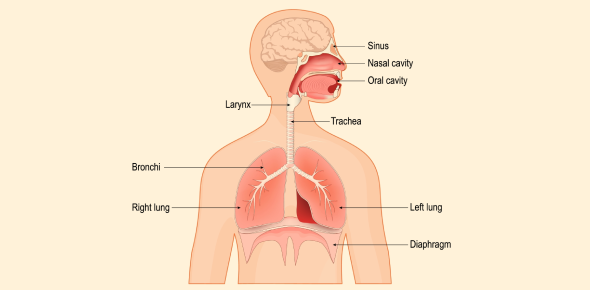Respiratory System: Structure, Functions, and Gas Exchange Processes
Lesson Overview
Have you ever sprinted upstairs only to find yourself gasping for air? At that moment, you experienced your respiratory system in action. Understanding the respiratory system isn't just about passing biology exams; it's about knowing how your body delivers oxygen and removes carbon dioxide every second. This lesson clarifies exactly how your respiratory system achieves this vital process.
What Are the Main Structures of the Respiratory System?
Here, you'll discover the essential structures of the respiratory system and their primary roles. Knowing these will help you grasp more complex processes later.
- Nose and Nasal Cavity: Air entry, warming, and filtration.
- Pharynx (Throat): Passageway for air and food.
- Larynx (Voice Box): Produces sound, directs airflow.
- Trachea (Windpipe): Air transport, keeps airway open with cartilage rings.
- Bronchi and Bronchioles: Direct air into lungs.
- Lungs: Main respiratory organs containing bronchioles and alveoli.
- Alveoli: Tiny air sacs where gas exchange occurs.
How Does Breathing Actually Work?
This section explains the mechanics behind breathing. You'll understand exactly how your chest and lungs expand and contract, moving air in and out.
Inhalation (Breathing In):
- The diaphragm contracts and moves downward.
- The chest cavity expands.
- The air pressure inside the lungs decreases, drawing air inward.
Exhalation (Breathing Out):
- The diaphragm relaxes and moves upward.
- The chest cavity shrinks.
- The pressure inside the lungs increases, pushing air out.
Remember: Inhale (volume up, pressure down), Exhale (volume down, pressure up).
Where and How Does Gas Exchange Occur?
Now, we'll explore how oxygen actually moves from your lungs into your blood and how carbon dioxide moves out.
- Gas exchange happens in alveoli, tiny sacs at the end of bronchioles.
- Oxygen diffuses into capillaries; carbon dioxide diffuses into alveoli.
- Alveoli have thin walls and extensive capillary networks, making diffusion rapid and efficient.
Important features for efficient gas exchange:
- Large surface area (millions of alveoli)
- Thin diffusion barrier (single-cell thickness)
- Moist environment aiding gas diffusion
How Does Oxygen Travel Through Your Blood?
Here, you'll discover how oxygen travels effectively from your lungs to every cell in your body.
- Oxygen binds to hemoglobin (a protein in red blood cells).
- Hemoglobin can carry up to four oxygen molecules.
- Hemoglobin releases oxygen where it is needed, such as active muscles or organs.
Factors affecting hemoglobin's oxygen delivery include:
- Blood pH (Bohr effect)
- Carbon dioxide concentration
- Body temperature
Quick Tip: Higher CO₂, lower pH, or increased temperature make hemoglobin release oxygen more readily.
How Is Carbon Dioxide Removed From Your Body?
Understand clearly how your body removes carbon dioxide, a waste product of your metabolism.
Carbon dioxide is transported in three main ways:
- Dissolved directly in blood plasma (~7-10%)
- Bound to hemoglobin as carbaminohemoglobin (~20-23%)
- Converted into bicarbonate ions (~70%)
At your lungs, bicarbonate converts back into carbon dioxide, and you exhale it.
What Controls Your Breathing Rate?
In this section, you'll learn how your brain regulates your breathing automatically to maintain the right oxygen and carbon dioxide levels.
- Your breathing is controlled primarily by your medulla oblongata and pons in your brainstem.
- High carbon dioxide levels in your blood signal your brain to breathe faster and deeper.
- Oxygen levels play a minor role, only becoming significant in severe circumstances.
Factors influencing breathing rate include:
- Exercise
- Emotions
- Pain
- Body temperature
Remember: Carbon dioxide levels primarily drive your breathing rate, not oxygen.
Common Questions and Misconceptions
Let's clear up some frequent confusion points related to the respiratory system.
- Breathing vs. Respiration: Breathing is air moving in and out; respiration refers to gas exchange and energy production processes.
- Why We Need Oxygen: Oxygen is essential for your cells to produce energy efficiently through cellular respiration.
- Partial Pressure Concept: Partial pressures represent gas concentrations, critical for understanding gas exchange.
Rate this lesson:
 Back to top
Back to top

.webp)